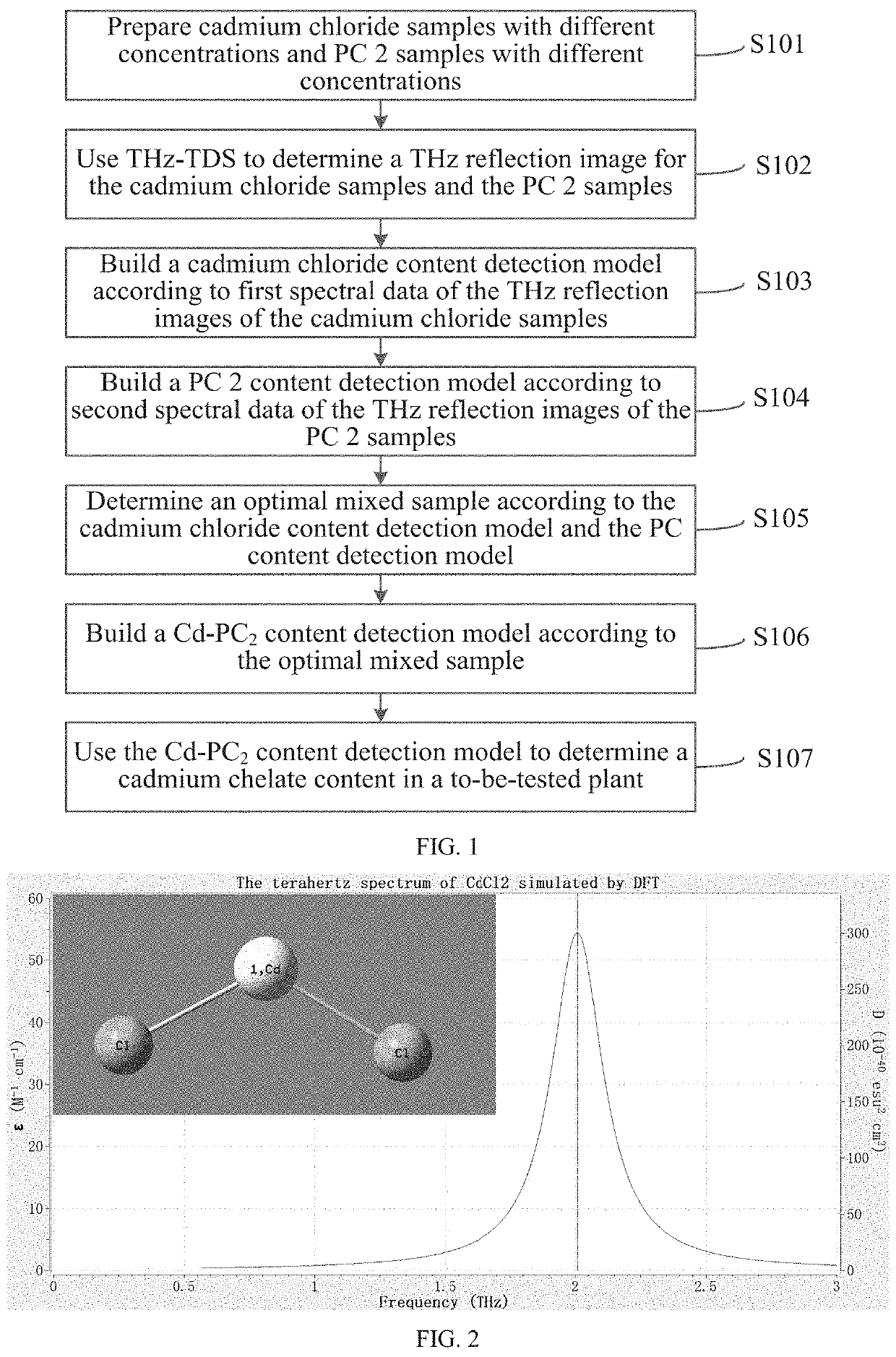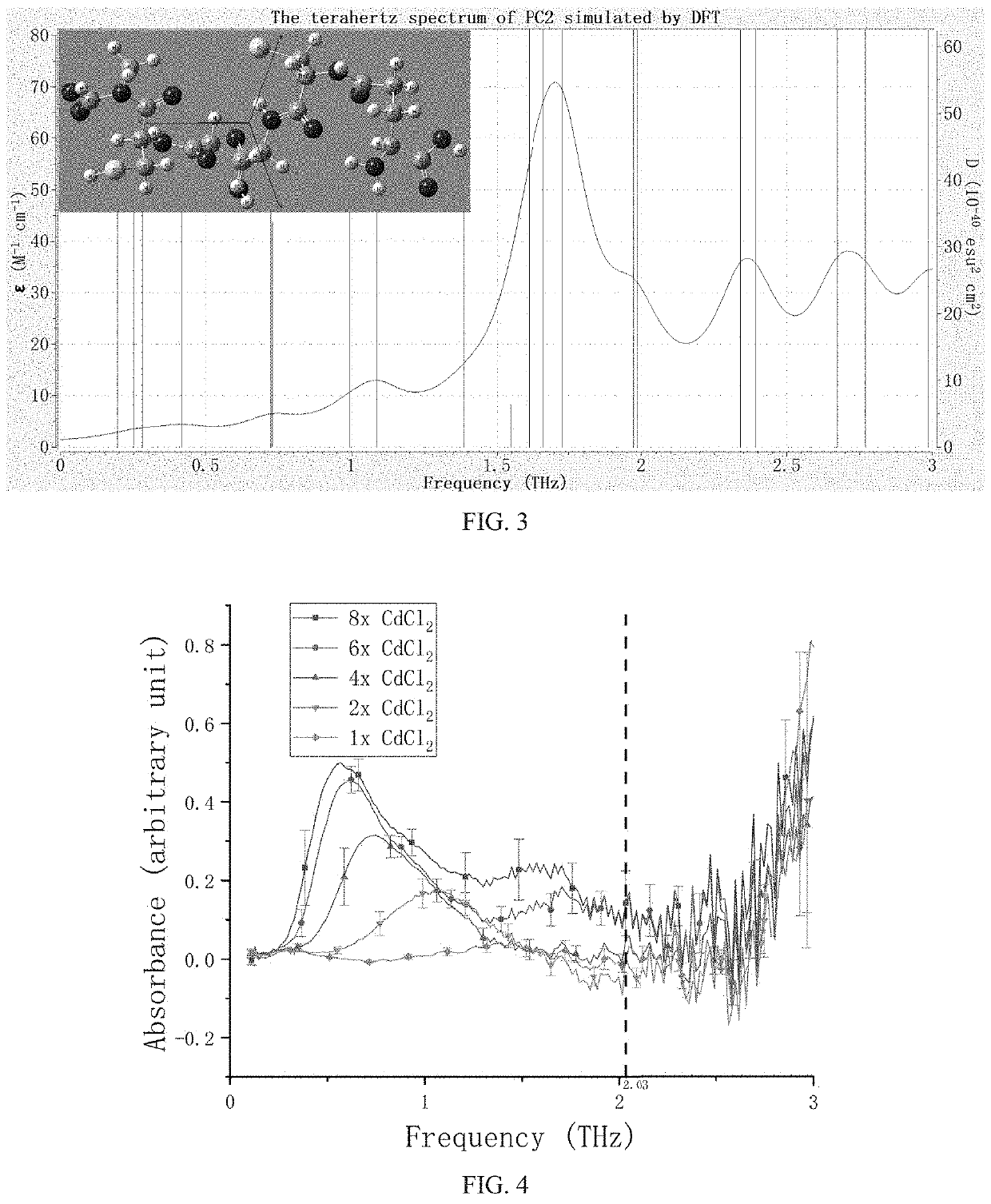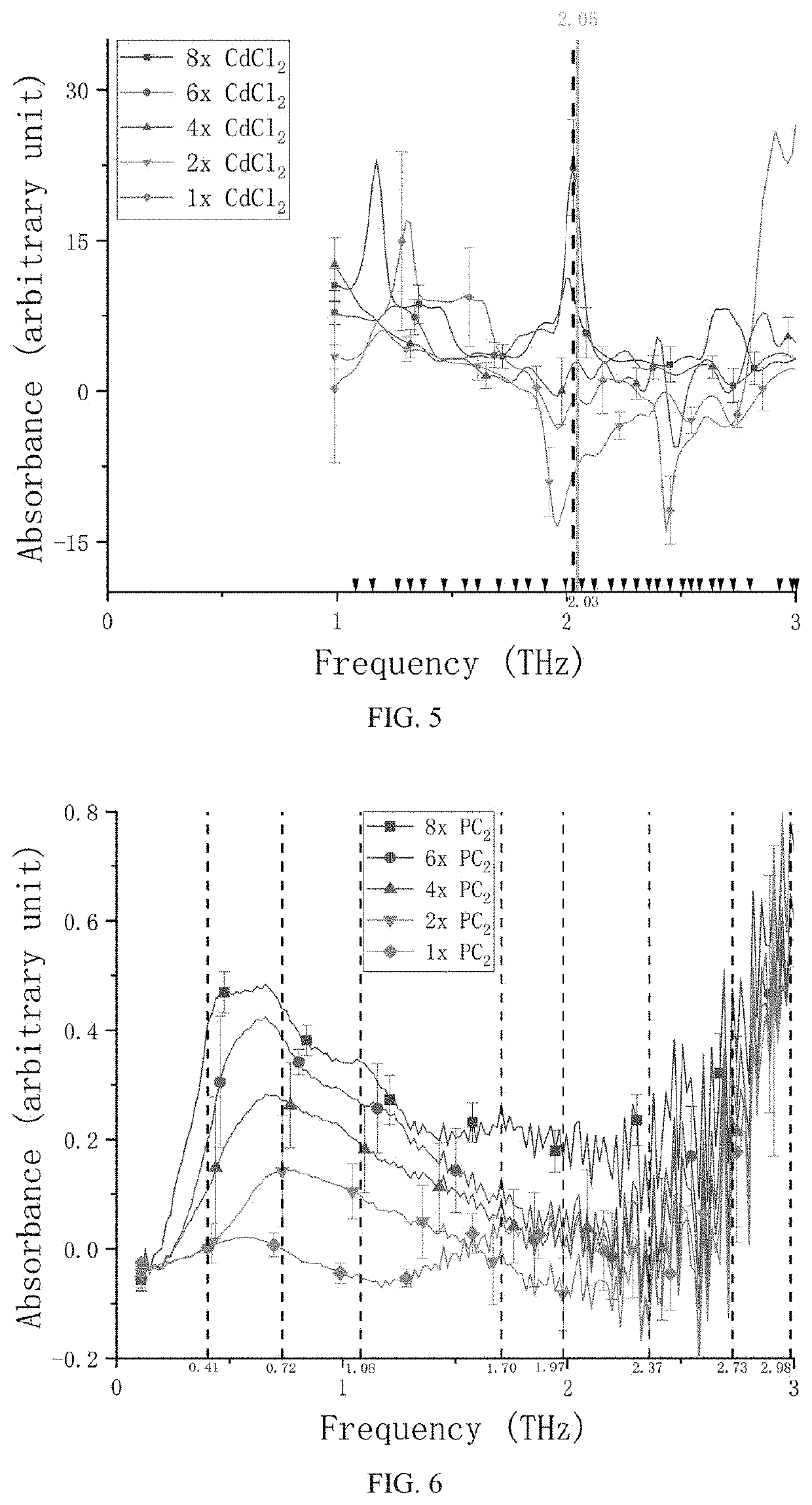Method and system for in-situ detection of cadmium chelates in plants
a cadmium chelate and in-situ detection technology, applied in the field of cadmium chelate detection, can solve the problems of heavy metal pollution, endanger human health, high cost, etc., and achieve the effect of accurately and quickly evaluating the phytoremediation performance of the plant and rapid in-situ detection of a chelated cd conten
- Summary
- Abstract
- Description
- Claims
- Application Information
AI Technical Summary
Benefits of technology
Problems solved by technology
Method used
Image
Examples
Embodiment Construction
[0090]The technical solutions in the examples of the present disclosure are clearly and completely described below with reference to the accompanying drawings in the examples of the present disclosure. Apparently, the described examples are merely a part rather than all of the examples of the present disclosure. All other examples obtained by a person of ordinary skill in the art based on the examples of the present disclosure without creative efforts shall fall within the protection scope of the present disclosure.
[0091]The present disclosure is intended to provide a method and system for the in-situ detection of cadmium chelates in a plant, which can quickly and in-situ detect the heavy metal accumulation capacity of a plant and thus can accurately and quickly evaluate the phytoremediation performance.
[0092]To make the foregoing objectives, features, and advantages of the present disclosure more comprehensible, the present disclosure is further described in detail below with refer...
PUM
 Login to View More
Login to View More Abstract
Description
Claims
Application Information
 Login to View More
Login to View More - R&D
- Intellectual Property
- Life Sciences
- Materials
- Tech Scout
- Unparalleled Data Quality
- Higher Quality Content
- 60% Fewer Hallucinations
Browse by: Latest US Patents, China's latest patents, Technical Efficacy Thesaurus, Application Domain, Technology Topic, Popular Technical Reports.
© 2025 PatSnap. All rights reserved.Legal|Privacy policy|Modern Slavery Act Transparency Statement|Sitemap|About US| Contact US: help@patsnap.com



